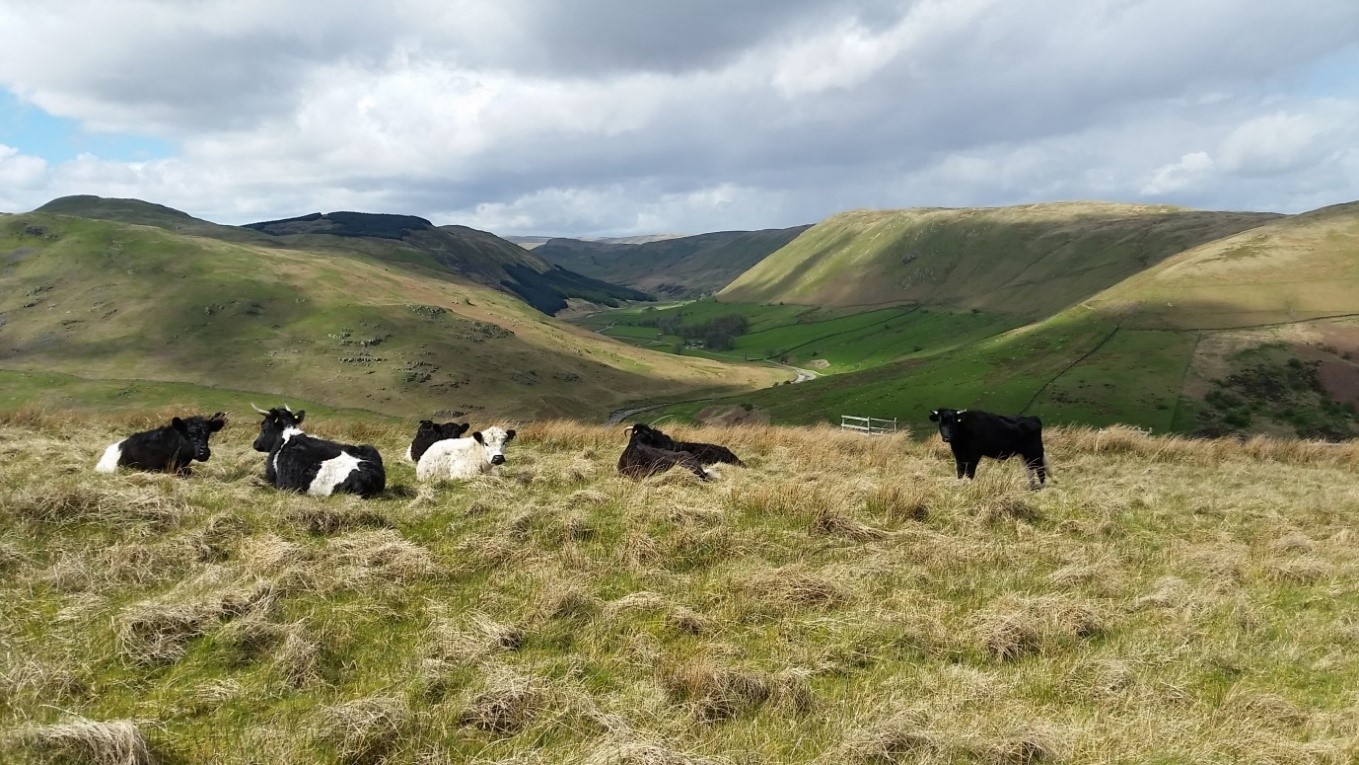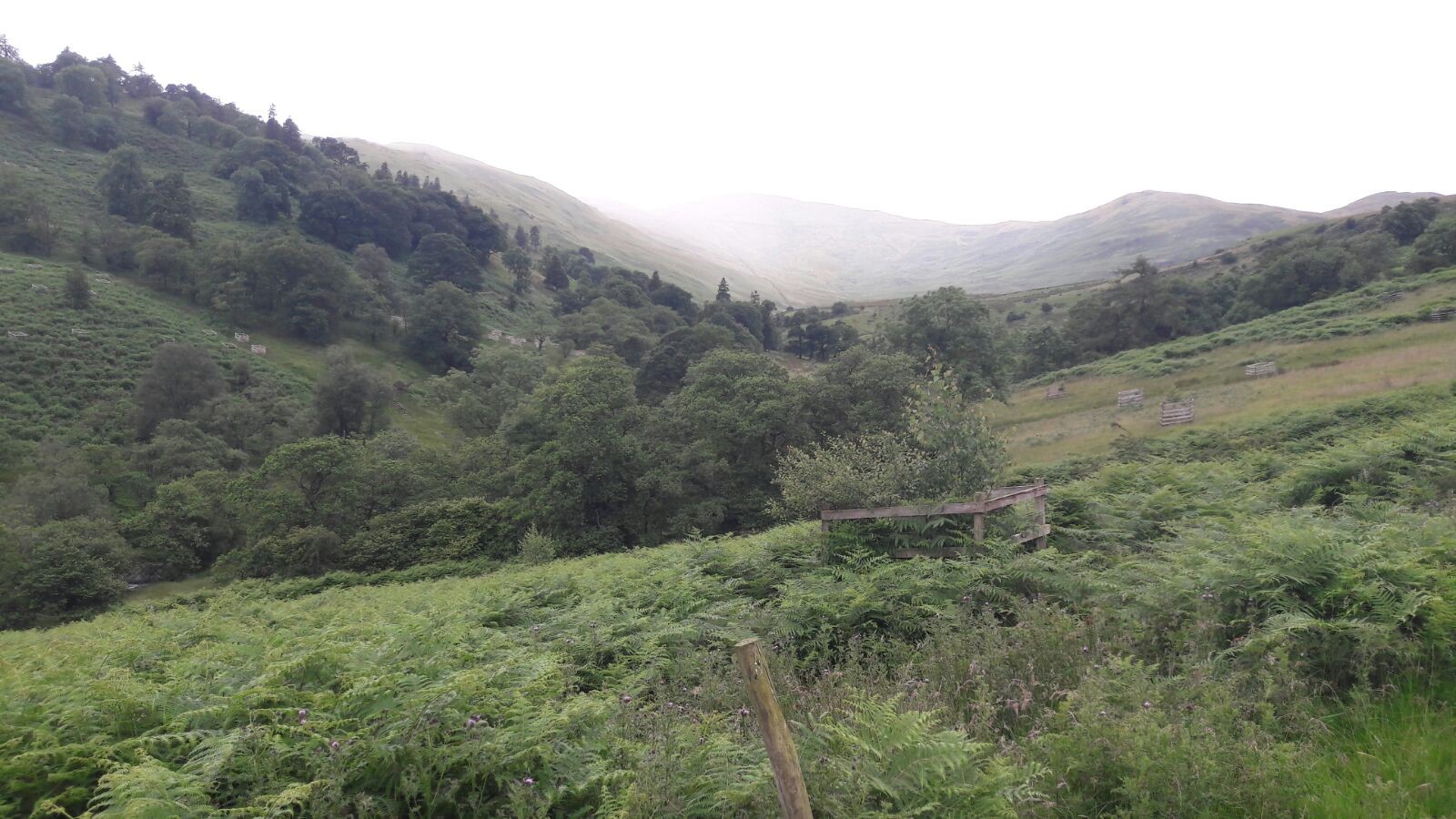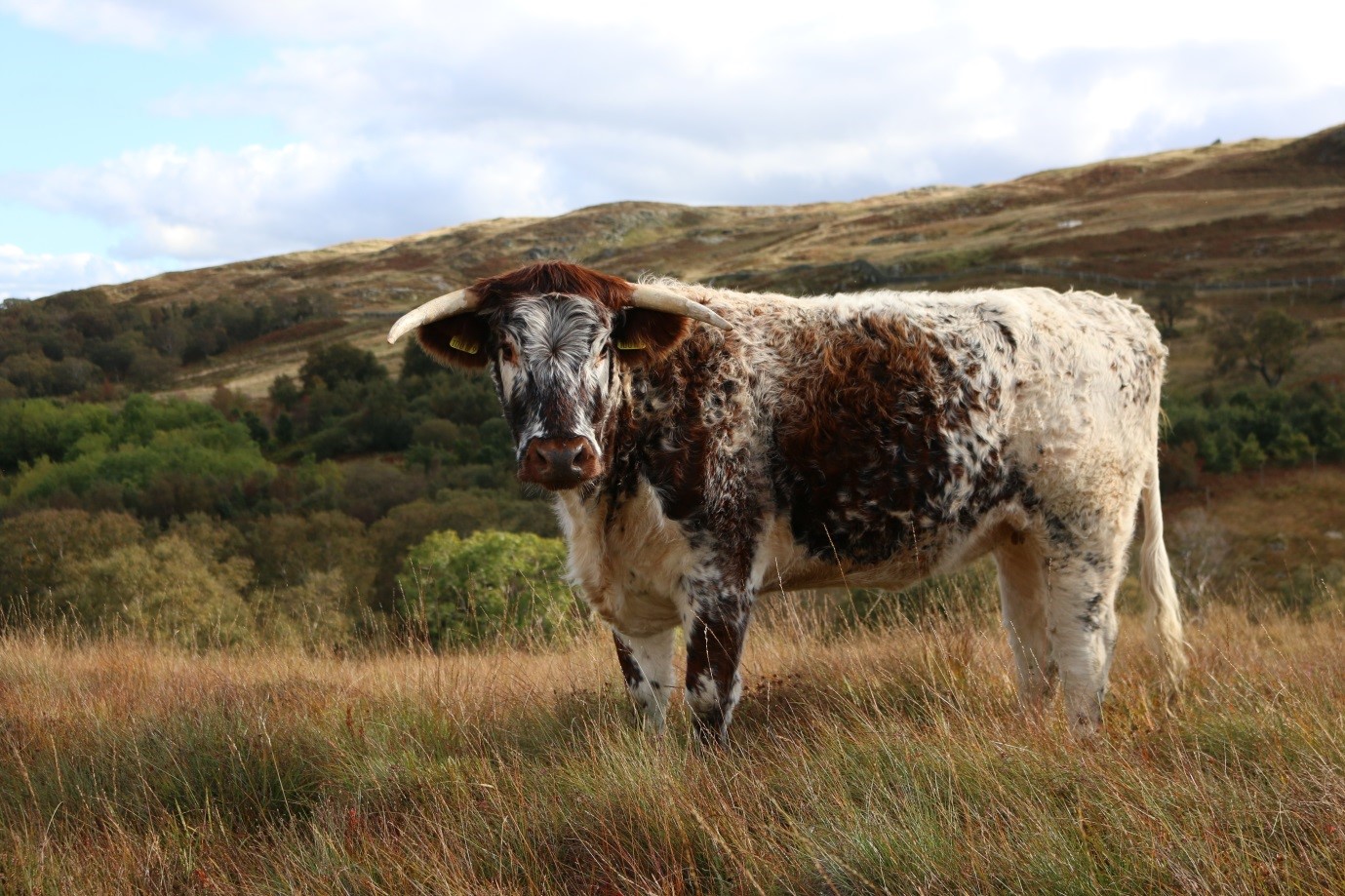Starting from scratch
Bekka and I are first generation farmers. After my mid-life crisis at 22, I knew only that I wanted to be involved with the land. At first, this romantic notion led me to wonder whether I’d like to spend my life teaching kids to climb or volunteers to fix footpaths: farming seemed like a job for a farmer’s son. With a reputation for being determined to the point of stubbornness, I found my opportunity to learn farming: an apprenticeship with an organic beef farmer. Getting to grips with extensive grazing regimes with cattle and prescriptive agri-environment schemes on some of the most beautiful farmland I had ever seen, I had found my calling; I was going to be a farmer and I was going to do it just like this. I was going to ignore what most others were doing, how the market encouraged it to be done, and what my mum thought.
Four years or so after finishing my apprenticeship, it was looking unlikely that my ongoing part-time work for the same farmer, supplemented by self-employed work, would offer the kind of future that my ambition would settle for. We had a go at applying for a tenancy with the National Trust and failed; it was clear that there were many others with similar aspirations. However, I was confident that we had something to offer that few others did; we had the skills and motivation to deliver the extensive cattle grazing that is increasingly preferred by agri-environment schemes.
This was our chance to build a credible farming business that would put us in a stronger position to secure a tenancy. In giving us this chance, our landlords, in particular the NT and RSPB, knew that they were nurturing a relationship with individuals that could be part of their plans for significant landscape changes.
Since September 2015 we have pushed hard to grow our business. A meeting with the bank in the first few months was enlightening; they politely refused to lend money to a young couple wanting to start a farming business with no tangible assets, no trading history and no formal agricultural qualifications. At the time, crowd funding was becoming very popular but it was increasingly competitive; the most successful campaigns took time and money to run. Inspired by the concept, and that of Community Supported Agriculture, we approached a small group of people in the local community with an idea; they invest £1K for three years and for each of the three years they would receive a return at 4% in the form of beef from our farm. We easily recruited 20 individuals to this scheme and 10 the following year. We now have a waiting list! These people are getting a good deal on a small safe investment and they are involved in a local farming business. The public are desperate for this connection to the land. There is certainly scope for rolling out a scheme like ours elsewhere.
Capital raised was used to purchase livestock. We are fortunate that our business relies on very little infrastructure to run so there was little requirement to purchase other assets. It was clear to us that native breeds would be the most appropriate but sourcing those animals proved more difficult than we anticipated; there are very few large herds with stock for sale. Smaller farms might have 2 or 3 animals for sale each year. To concentrate on one breed was going to be a logistical nightmare. We had no fixed idea about which breed we’d like to keep. I’d experienced Limousin and Angus on some of the more typical farms that I’d worked on. The organic farmer had Redpoll but even these were too big in my mind. There was good sense in keeping a small cow: economical and practical sense. We have Shetlands, Dexters, Galloways, Highlands, Longhorns and crosses between them. It has been helpful to see how the different breeds have performed. Over the coming years, we’ll probably concentrate on the Shetlands and the Highlands. The Shetland produces a fine calf off grass and can calve easily to a larger bull: we’ve used a Whitebred Shorthorn recently but others are using continentals. She can keep herself fit outwintering on poor quality forage and have the lightest impact on the land. She’s not as hardy as the Highland however. We’ll probably keep some Highlands for the very tough fell land. Dexters and Longhorns are great but we do need to achieve some consistency within our store cattle destined for our meat boxes: they are slightly too small and too big respectively.
We’re still working out the economics of this system. Fundamentally, from ultra-low inputs (of rents, feed, medicines, chemicals, fertilisers, and oil) we set out to achieve the highest value from a relatively small quantity of livestock outputs. Added value comes from direct marketing of beef to end consumer via a box scheme and the sale of halter trained, pedigree-registered, quiet heifers. In the current subsidy system, we receive a proportion of the payments made to our landlords. With Brexit looming, our approach puts us in a strong position to receive income for delivering public goods.
The landscape that forms our farm holding and that our land management delivers is my vision for the future of the uplands and wild areas of the lowlands. I know that rewilding all of our countryside is not desirable: areas that are better suited to achieving higher levels of production should be utilised for doing so. However, I believe that within my lifetime, we will need to redeploy organic, low energy approaches to food production across all sectors: I like to call this Farming with Nature.
Next steps
Operating in this way is not sustainable in the long term: we need to further reduce costs, to reduce our carbon footprint, and to simplify our logistics. A small ring-fenced unit with some basic infrastructure (yard, modern building for wintering calves and as a sick bay, handling facilities) is what we need next. I think our relationship with the bank is better than previously described but a polite shake of the head would be the response to the question of a mortgage. Instead, the security of a 10+ year Farm Business Tenancy is our preferred next step.
In a local culture of sheep farmers struggling to make it pay, I hope that, in time, our business model will provide a helpful case study to encourage others to follow.
Economics of extensive systems
Rewilding. It seems that this word has many meanings and all of them are detested by farmers. From my point of view, my vision for the uplands where I want to live and work doesn’t look like picture A below.

It looks like picture B below.

Why? Because it’s more beautiful, because it’s a landscape full of complex healthy ecosystems, because it’s a landscape where livestock thrive – they have shade, shelter, a diverse diet – I strongly believe that it’s a landscape where farming businesses thrive too.
Production of livestock: Is this the most important output from uplands? No! Livestock production is one of many outputs that can be achieved. In recent times, livestock production has been incentivised at the expense of other valuable outputs. The trouble is, it’s incredibly difficult to measure the other outputs – the ecosystem services – carbon sequestration, water quality, flood alleviation, health and wellbeing etc.
Sustainable extensification: The process from more to less intensive production of livestock. This needs support at policy level – which is achievable with effective lobbying. However, it also needs support at grassroots level. I think the next generation of farmers is more willing to embrace changes that make sound business sense.
Why is this relevant to this presentation?
Extensification can lead to increase in productivity (in biological terms) and profitability by reducing large input costs. It can promote long term economic productivity: farming for the next generation. My children (if I have any) will live in the 22nd century. As land managers, we should think about our legacies over this kind of time-scale.

Native and rare breeds are the key to achieving the productivity and profitability that are possible from our extensive systems. Like any farmer, I’ll select for discernible traits. Perhaps genomics testing will become so accessible that we’ll also be able to select for the most efficient converters in CO2 equivalents.
The best beef in the world
I may be biased but our beef is the best I’ve ever tasted. Obviously, breed and processing (including hanging) play a part in the quality of the product. Higher value meat products tend to use breed/wellknown provenance/length of dry ageing period as USPs. In my mind, the diet and the management system have the most significant impact on the eating quality of meat.
I think there is a massive opportunity to build a bigger market for the beef produced from extensive farming systems like ours. Perhaps this means taking market share away from high value products with ‘hollow’ USPs as consumers gain a better understanding of food production systems.
As for the question of food security, I’d welcome a study that reports on our national and global requirements for providing a nutritious diet to the population.
In summary, this session is about ‘Setting your goals and achieving your dreams’.
Goals: To secure a farm tenancy, run a profitable farming business . . . and enjoy it.
Dreams: To protect and enhance our natural resources to promote a thriving future for agriculture and life on our planet: for generations.